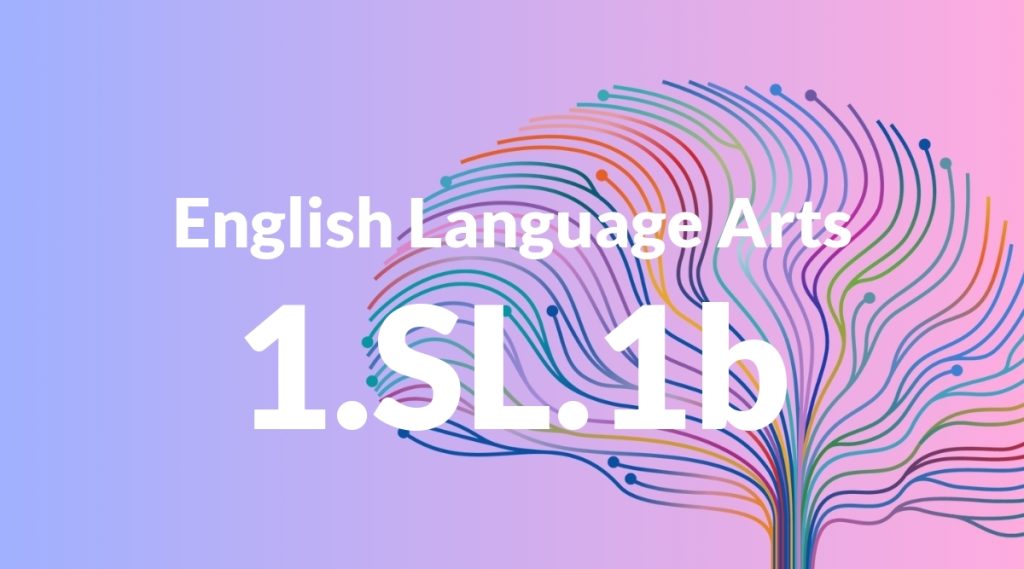Standard: 1.SL.1b – Build on others’ talk in conversations by responding to the comments of others through multiple exchanges.
Grade level: Grade 1
Subject: English Language Arts
Domain: Speaking & Listening
Teacher Overview
This standard emphasizes the importance of students building on others’ talk in conversations. It is crucial for developing effective communication skills, which are foundational for academic and social success. Students should be familiar with basic conversational rules, such as turn-taking and active listening, to effectively build on others’ comments.
Mastering this standard will enable students to engage in more complex conversations, enhancing their communication and social interaction skills.
Common Misconception 1
A common misconception is that students think responding means repeating what was said. This is incorrect because true engagement involves adding new information or asking questions.
Intervention 1
To address this, teachers can model active listening and demonstrate how to ask questions or provide additional information in response to others’ comments.
Common Misconception 2
Another misconception is that students believe they must always agree with others to build on the conversation. This is incorrect because differing viewpoints can lead to richer discussions.
Intervention 2
Teachers can encourage respectful disagreement by teaching phrases like ‘I see it differently because…’ or ‘Another way to look at it is…’.
Prerequisite Knowledge
Students should understand basic conversational rules, such as taking turns speaking and listening attentively to others.
Subsequent Knowledge
Students will develop the ability to engage in more complex and meaningful conversations, enhancing their social and communication skills.
Instructional Activities
- Role-playing different conversation scenarios
- Group storytelling where each student adds to the story
- Class discussions on a given topic
- Partner activities where students practice responding to each other
- Using puppets to model conversational exchanges




